Table of Contents
The Amelanchier bonsai tree has been gaining attention from many bonsai enthusiasts. But before you get all too excited and start growing one yourself, here are a few important things you need to know first about this interesting bonsai variety.
| Species | Rosaceae |
| Scientific Name | Amelanchier Canadensis |
| Average Height | 25.00 to 30.00 feet |
| Average Spread | 15.00 to 20.00 feet |
| Origin Country | Eastern North America |
| Flower Bloom Time | April to May |
| Flower | Showy |
| Water | Medium |
| Sunlight | Full Sun to Part Shade |
| Maintenance | Low |
Can amelanchier tree be bonsai?
Yes, the Amelanchier tree can be bonsai. It can grow moderately in many atmospheric and soil conditions. This bonsai tree has high branches and multiple steps that create dense shrubs. But, for this tree to grow, it is important to prune or cut it properly. This tree blooms with white flowers and produces fruits of purple color. However, in the fall, the tree boasts of different colors such as orange, yellow, and red.
The tree is also known in different names such as service tree and serviceberry. Other names include bloody chokeberry, swamp sugar pea, and grape pear. The tree’s name came from the berries it yields. The taste of these berries is like that of honey, which explains the name.
Amelanchier bonsai history
There is not much information regarding the history of the Amelanchier bonsai. However, there are lots of notable details about the tree itself. The native small tree or large shrub grows moderately in most types of soils. Several highly branched and upright steps form a dense shrub with numerous branches with small diameters, or a small tree if pruned properly.
You can also train the trees and many nurseries offer them with a single trunk. The white flowers are its primary ornamental features, followed by purple fruits in early summer or late spring. Fruits are formed in spring before leaves and are consumed fast by birds. Amelanchier showcases a stunning full display of colors that range from yellow to orange and finally dull red.
The tree will attract birds and is appropriate for naturalistic paintings. The tree suckers from the trunk’s base may be a bit of a maintenance issue in formal landscapes or urban plantings.
Amelanchier bonsai scientific name
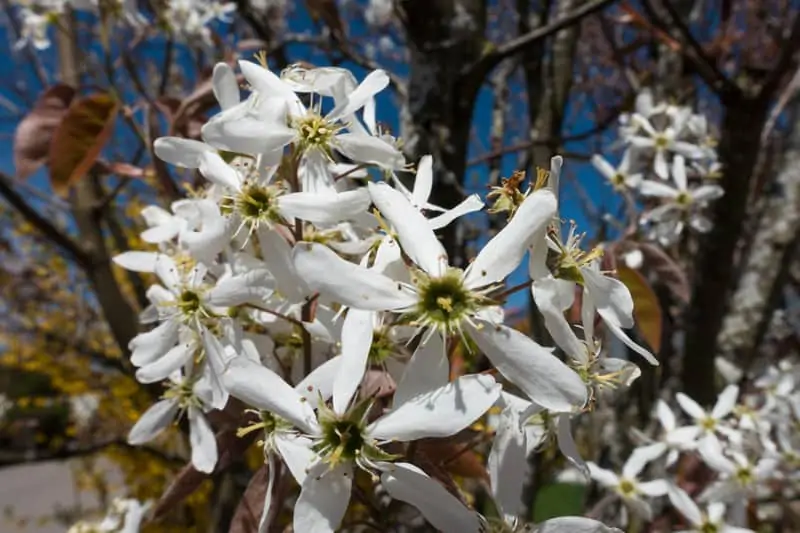
Amelanchier is already the scientific name of Amelanchier bonsai that is also called shadwood, shadblow, shadbush, juneberry, serviceberry, chuckley pear, wild plum, sugarplum, or saskatoon. This is a genus of approximately 20 species of deciduous-leaved small trees and shrubs in the rose family.
Amelanchier bonsai care
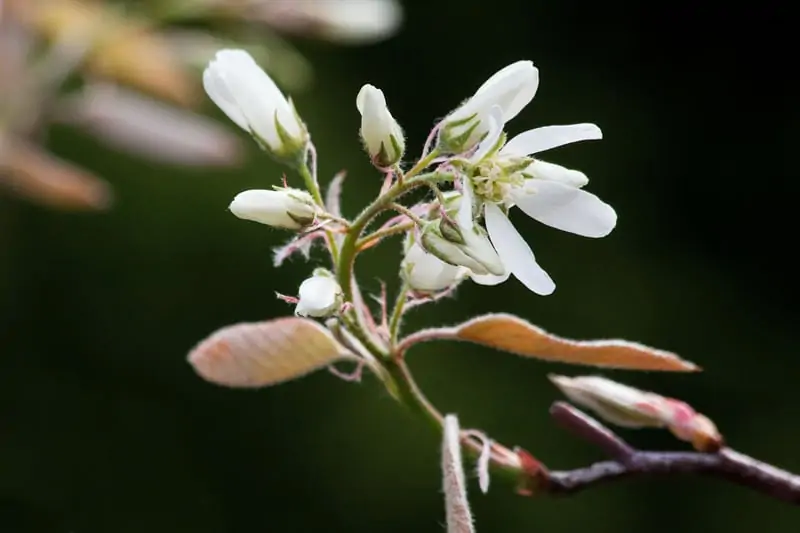
You must water your Amelanchier bonsai regularly after the initial year, just like other plants. In addition, even if the tree doesn’t require much pruning, doing it is still a wise idea, particularly for untangling the stems. You might need to wait until the blooming season ends to prune these shrubs if you like to see their flowers bloom.
Amelanchier bonsai temperature
The Amelanchier bonsai is a temperature tree, with most varieties disliking anything warmer.
Amelanchier bonsai fertilizer
You need to feed your Amelanchier bonsai every couple of weeks with the use of half-strength plant food or liquid bonsai fertilizer from spring to autumn.
Amelanchier bonsai pruning/trimming
The Amelanchier likes suckering from the roots. This means that if you prefer a large trunk, constant pruning is required to check on this tendency. Styling your Amelanchier as a type to clump can help take advantage of this characteristic.
When pruning the stems, make sure you get rid of all cross-over and tangled branches. Growing branches should be pruned into the ground. See to it that you also get rid of all deadwood regularly.
Amelanchier bonsai repotting
Repotting should be done in early spring every second year with the use of a basic soil mix. This tree likes putting down some long taproots, which means it may take several years of using smaller pots little by little to establish the tree as bonsai.
Amelanchier bonsai pests and diseases
Cambium miners may cause concern if noticed although these don’t damage the tree. Their mines may extend from twigs to roots, forming lines of light color in the bark. Leaf miners mine leaves, especially the leaf’s lower half, with the mines shaped irregularly.
There are at least two insects that skeletonize Amelanchier leaves. The first one creates small cocoons on the leaves’ undersides. Skeletonized leaves appear as they got windows in them once the insects have scraped off the tissue from the bottom and top of the leaves.
The next insect is the pear sawfly’s larvae. The larvae are greenish-black to black with a slimy look. The adult sawflies lay their eggs in late and early summer. Heavily skeletonized leaves have already dropped off.
Some borers attack Amelanchier. Spider mites also feed on this tree. Detecting these insects is hard because of their small size. Loss of the green leaf coloration is the primary symptom of mite injury.
You may notice very fine webbing if there is a heavy infestation. Different types of aphids can also such juices from the Amelanchier tree. Heavy infestations distort the new growth and foliage, depositing large quantities of sticky honeydew on the lower foliage. It is on this honeydew where black sooty mold can grow.
Also known as black mildew, witches’ broom may infect the growing plant that causes the formation of numerous stems. The stems’ cluster is known as the witches’ broom. One more symptom is the black fungal growth that coats the leaf’s underside. Other common diseases of Amelanchier bonsai include leaf blight, fire blight, powdery mildews, fruit rot, and cedar rust.
Amelanchier bonsai soil
The Amelanchier bonsai requires deep and rich well-drained soils, but these can also grow in garden conditions. Just make sure that the plant receives full sunlight because the flowers need this to bloom.
Amelanchier bonsai watering
The Amelanchier bonsai only needs moderate watering for survival.
Amelanchier bonsai sunlight requirements
The Amelanchier bonsai can thrive well under full sun, part sun, and part shade.
Amelanchier bonsai varieties
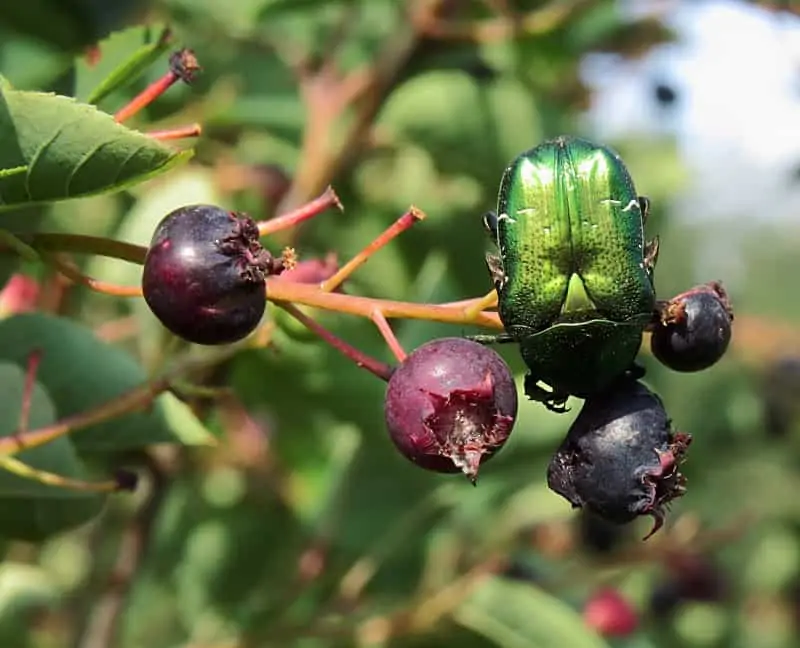
There are several varieties of Amelanchier bonsai that can make for lovely trees that you can try growing yourself:
Amelanchier lamarckii bonsai
The Amelanchier lamarckii, or also known as shadbush, serviceberry, or juneberry, is a type of large deciduous flowering small tree or shrub that is part of the Rosaceae family. This is extensively naturalized in Europe where they call it snowy mespil or snowy Mespilus. This produces white flowers shaped like a star in spring, and they show up simultaneously as new leaves unfurl.
Amelanchier canadensis bonsai
Amelanchier Canadensis is an early-flowering deciduous small tree or large shrub that belongs to the rose family. It is native to eastern North American and can be found in Piedmont and the coastal regions of NC. This is an understory tree that is usually discovered growing in clumps in thickets, lowlands, bogs, and swamps, growing a height of 15 to 25 feet. The fragrant and showy flowers bloom in clusters in spring before leaf-out. This is followed by berry-like drupes. The leaves turn showy orange and red in the fall.
Amelanchier ovalis bonsai
The Amelanchier ovalis or also called snowy Mespilus is serviceberry. It has edible pome fruits that can be consumed cooked or raw. This is a native species to southern and central Europe, the Middle East, and North Africa.
How fast can Amelanchier bonsai grow?
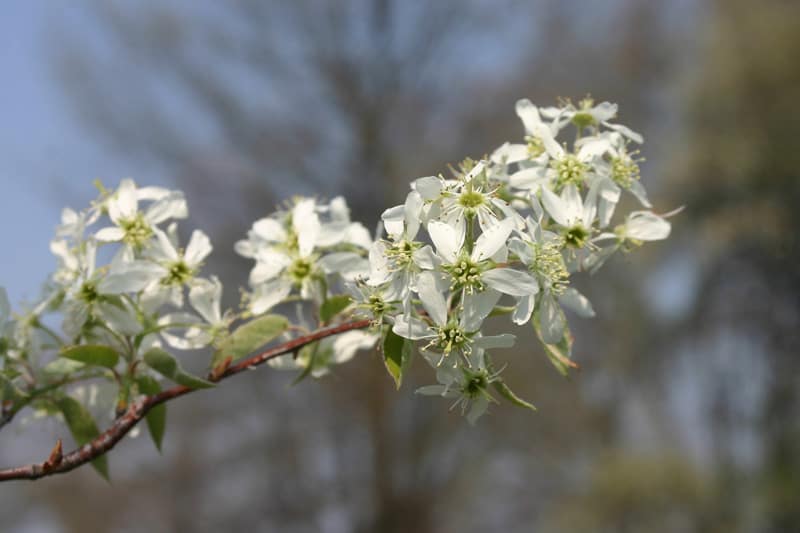
The Amelanchier bonsai’s growth rate will depend on many factors. However, when in the wild, these trees tend to grow up to 2 inches in just a year, with the leaves taking up to 4 days to bloom.
Difference between Amelanchier Canadensis and lamarckii
Amelanchier Canadensis or Canadian serviceberry is a type of multi-stemmed, upright, and dense small tree or large shrub with a delicate crown shaped like a dome. The Amelanchier bonsai tree grows best in spring or fall and requires the right soil conditions and adequate sunlight.
While this bonsai may be able to grow indoor, it is recommended to grow it outdoor, especially if you want to see its flowers bloom. It grows at a height of 25 to 30 feet, and a width of 15 to 20 feet. It loves full sun to part shade and can grow easily in acidic, well-drained, moist soils. This is a low-maintenance plant that is disease and pest-free in general. However, you might want to watch out for fire blight.
The Amelanchier Canadensis is ideal as a specimen plant, screens, and hedges, or for slopes and banks. This can also be used for controlling erosion. It is great along ponds or stream banks or in native or naturalized plant gardens.
This tree that is native to eastern North America is propagated by semi-hardwood cuttings or seed, or by removing suckers in winter.
On the other hand, the Amelanchier lamarckii or juneberry is one type of large upright deciduous small tree or shrub of open habit that has young leaves of rich bronze-red color. It has been the recipient of the Royal Horticultural Society’s prestigious Award of Garden Merit.
This grows as tall as 15 to 25 feet with a width of 4 to 8 meters. This variety loves full sun to part shade and can be grown easily in acidic, well-drained, moist soils. The best fall color and berry production take place in full sun. It also tolerates a wide range of soils just well.
The plant is also low maintenance, propagated by semi-hardwood cuttings and seed, and is native to North America.
Amelanchier bonsai indoor or outdoor
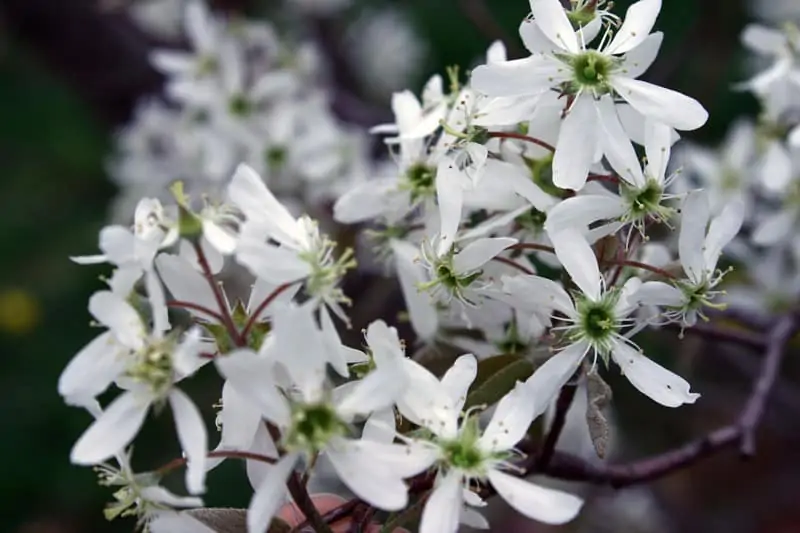
The Amelanchier bonsai tends to grow at its best when it gets enough sunlight, especially if you want to see its flowers bloom.
Does amelanchier bonsai have fruits?
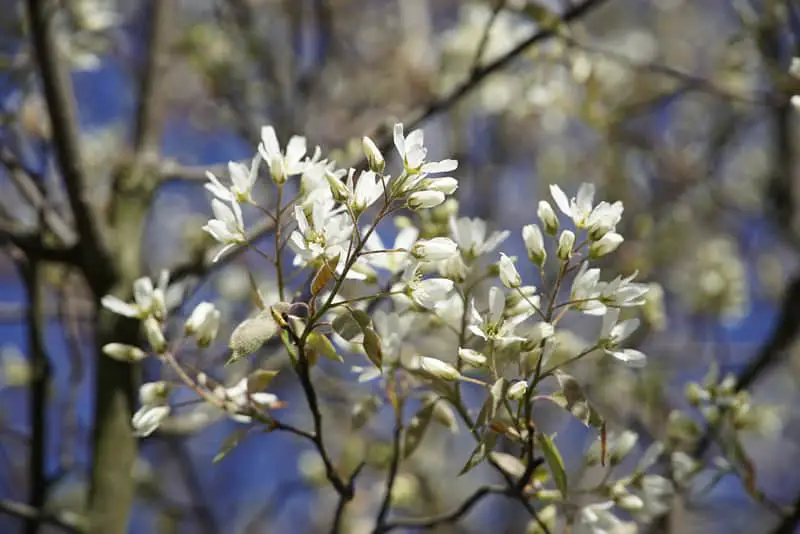
The Amelanchier bonsai may bear fruits. The tree’s fruits have varied uses and different tastes. These are rich in copper and iron.
How to bonsai Amelanchier tree
Seeds, air layering, grafting, and softwood cuttings are the different methods used to bonsai the Amelanchier tree.
You need to follow the steps below to plant the bonsai shrub or tree:
- Dig out and break up the soil nicely. When the soil is a part of a hedge, there must be a minimum distance of 2 meters to 6 ½ feet between every shrub. When breaking up the soil, see to it that you remove leftover bits and pieces like wood or rocks from the old roots.
- Dig a hole of a minimum of 4 to 5 times the size of the specific plant clump you plan to transfer.
- Add a soil conditioner, possibly organic such as seaweed or manure, and the planting soil mix. Sand can also be added to the mix if you will plant on heavy soil.
- Pour the clump in the bucket with water and allow it to settle down for some time. Doing this helps moisturize the roots and soil.
- Run your fingers through the clump to untangle the roots. A dedicated tool can be used as well but avoid winding them if these are too interwoven.
- Add some fertilizer or soil conditioner then mix it properly to blend well with the soil.
- Find the middle of the hole and put your shrub or tree at that exact spot. Make sure you spread out the roots when placing the shrub or tree.
- Grab the mix that contains the soil, soil conditioner, and peat and pour this into the hole.
- Lightly press on the soil for the mix to settle down.
- Don’t forget to water the shrub or plan regularly after it grew for about one year.
You can also stake shrubs or trees that have a height of over one meter. Staking plants can keep them protected from breaks and bends that take place because of the windy conditions of the weather.
Is Amelanchier Canadensis bonsai poisonous to dogs?
It seems that there is no reference available that suggests that Amelanchier Canadensis bonsai is poisonous to canines. Just to be safe, keep your bonsai tree out of your pup’s reach.
![Pittosporum Bonsai [Pittosporum Tobira]](https://www.bonsai-express.com/wp-content/uploads/2022/05/Pittosporum-Bonsai-365x200.jpg)
![Sorbus Bonsai [Sorbus Aucuparia]](https://www.bonsai-express.com/wp-content/uploads/2022/05/Sorbus-Bonsai-365x200.jpg)
![Tsuga Bonsai [Tsuga Canadensis]](https://www.bonsai-express.com/wp-content/uploads/2022/05/Tsuga-Bonsai-365x200.jpg)
![Tamarix Bonsai [Tamarix Ramosissima]](https://www.bonsai-express.com/wp-content/uploads/2022/05/Tamarix-Bonsai-365x200.jpg)